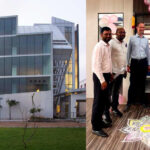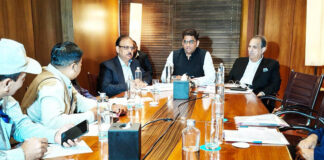Airborne transmission of the novel coronavirus is possible under certain conditions, cautions a study undertaken by the Centre for Cellular and Molecular Biology (CCMB). The research was conducted to determine the transmission pattern of the virus in various enclosures in hospitals to assess the risks posed to healthcare workers. Air samples were collected from hospitals in Hyderabad and Mohali for the study.
Initially, the novel coronavirus was considered to be spreading mainly by contact and droplets. Hence, hand washing, wearing masks, and social distancing were the key measures suggested to contain disease transmission. However, a steady increase in the number of COVID-19 cases opened up the possibility for airborne transmission, which is different from droplet transmission. Aerosol particles are smaller in size than droplets and hence, remain suspended in the air for a longer period. This makes airborne transmission more infectious.
“Researchers are now able to find the virus in infectious aerosols measuring the size of less than 5 μm. The smaller sized aerosols could get formed due to evaporation of water from larger respiratory droplets. These smaller sized aerosols can stay suspended in the air for longer durations and also travel longer distances. Thus the question arises whether the distance of 1 or 2 meters is safe or not. There is some emerging evidence which indicates the possibility of airborne transmission of SARS-CoV-2” said CCMB in a release.
Currently, many countries have relaxed the restrictions on mobility and interactions making the recommended safety norms difficult to be implemented in public settings. In the light of the evidence obtained from the research, “The findings of our study objectively reassure people that advocated preventive measures would largely be successful in preventing the infection and urge the governments to continue promoting the same”, the authors say.
Researchers are now able to find the virus in infectious aerosols measuring the size of less than 5 μm. The smaller sized aerosols could get formed due to evaporation of water from larger respiratory droplets.
The team collected 64 air samples under different settings, from spaces that were occupied and unoccupied by COVID positive patients. The virus was detected in air samples collected from COVID wards but not the non-COVID wards. Thus, the study indicates that the currently adopted strategy of separating the hospitals into COVID and non-COVID wards are effective and imperative. Further, the results of the study show that the long-term presence of COVID-positive patients leads to an increased aerosol burden in the air.
The study, yet to be peer-reviewed, finds that a short duration of exposure to COVID positive patient may not put one at high risk. “Our results indicate that the chance of picking up SARS-CoV-2 in the air is directly related to several COVID positive cases in the room, their symptomatic status, and the duration of exposure and that the demarcation of hospital areas into COVID and non-COVID areas is a successful strategy to prevent cross infections”, said the study that was published in the preprint server Medrxiv recently.
CCMB has also issued an advisory to limit the COVID-19 spread. The advisory promotes wearing masks and maintaining social distancing of at least 3 feet. Also, it suggests conducting gatherings in well-ventilated open spaces, as the virus stays longer in closed rooms. Further, it has also made an emphasis on exercising caution in public toilets.
The advisory mentioned, “Flushing has the potential to generate aerosols which can stay longer in air and virus is known to be excreted in the stool. Masks should be always on while using these and if possible, the same toilet should be reused only after half an hour or more of the last usage. Pictorial instructions should be stuck in the toilets regarding cleaning them after utility. This should be followed by adequate hand hygiene”.
The authors of the study are Shivranjani C Moharir, T. Sharath Chandra, Arushi Goel, Bhuwaneshwar Thakur, Gurpreet Singh Bhalla, Dinesh Kumar, Digvijay Singh Naruka, Ashwani Kumar, Amit Tuli, Swathi Suravaram, Thrilok Chander Bingi, M Srinivas, Rajarao Mesipogu, Krishna Reddy, Sanjeev Khosla, Karthik Bharadwaj Tallapaka, and Rakesh Mishra.











